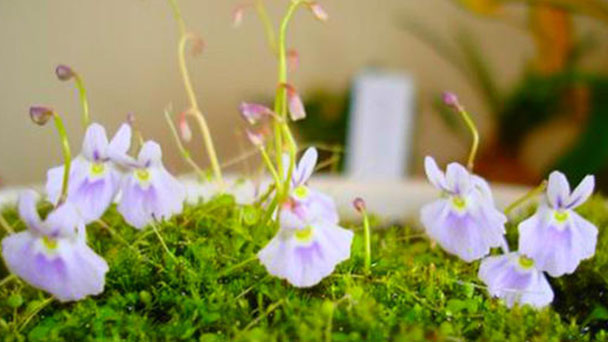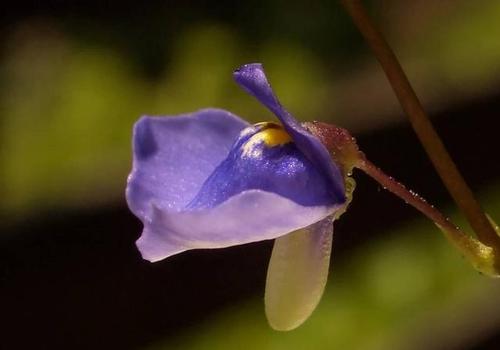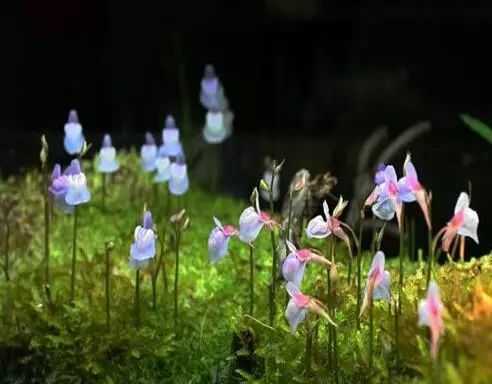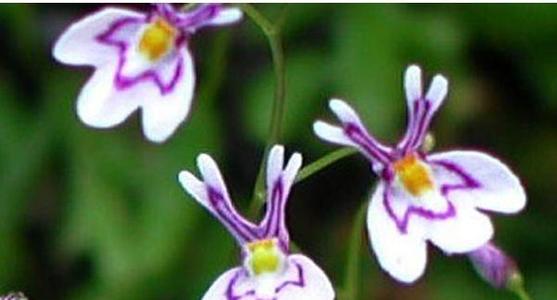How to grow and care for Utricularia
Written by Maggie
Dec 19 2020

Utricularia is a genus of aquatic herbs of the family Utricularia for one or more years. There are many varieties of Utricularia with various forms, among which the small white rabbit. Utricularia, is named for its lovely floral pattern, and it is also one of the most popular terrestrial Utricularia. So, how are Utricularia grown? What do you need to know when caring for Utricularia? Please read along with me with questions!

How to grow Utricularia
Best growing time: Utricularia is usually propagated by seeds. and is best seeded in autumn.
Best growing soils: Utricularia terrestrial and epiphytic populations can be grown solely with water moss or peat, or with 1/2 of perlite or river sand added;
Aquatic populations can use containers holding water to lay a thin layer of acidic substrate at the bottom. Peat (wet before use), river sand, acidic granular soil, etc., can be used to facilitate the stability of water quality. If conditions permit, a professional aquarium can be used and the cultivation method of aquatic plants can be referred.
Growth humidity requirements: The air humidity in Utricularia culture environments should be kept above 50 {bf}, which can be met in a general cultivation environment.
Optimum growth temperature: Utricularia is widely distributed and has a wide range of temperature requirements. Most species can survive from 10 to 32 degrees. Some species can withstand temperatures of 0 degrees or 37 degrees.
Best growth lighting: Utricularia prefers bright light and can tolerate semi-shade. Aquatic and terrestrial species may also be exposed to mild sunlight, but must avoid exposure to strong light.
How to care for Utricularia
Fertilizer application:
During the growing season, terrestrial and epiphytic populations of Utricularia can be sprayed on the foliage with a dilution of 5,000 times, such as universal compound fertilizer, 1-2 times per month. Fertilization would rather thin fertilizer frequent application, do not concentration too high, so as to avoid the serious consequences of fertilizer injury or even death. Do not apply fertilizer at will without experience.
The aquatic population can be added with liquid fertilizer in half at the time of monthly water change. The planting method of aquatic plants can be referred to. Small daphnia may also be fed as a live feed of aquatic Utricularia.

Watering points:
Utricularia uses water sources with low mineral concentrations. In the growing season of the land population, it is suitable to adopt the high-water level basin soaking method to keep the substrate in high humidity. If the substrate is suspended during hibernation or in winter, the basin soaking method can be cancelled and the substrate is slightly wet. The Utricularia population needs to keep the substrate high humidity and good air permeability, or it can be planted by a low-water basin soaking method. The aquatic population should change the water 1-2 times per month according to the water quality, about 1/3 of the total water volume of each change.
Propagation points:
The propagation methods of Utricularia mainly include cutting, meristening and sowing.
1. Cut off: Utricularia is a reproductively easy insectivorous plant, so long stems are cut off to form new plants.
2. Winter buds: Some temperate species develop winter buds under the stimulus of low winter temperatures, and new plants will grow when the spring temperature warms up.
3. Sowing: The land population can be directly scattered on the clean substrate surface when sowing, maintaining high humidity and bright light. The Utricularia population can directly sow seeds on the water surface, and the temperature is suitable for germination in about 1-2 months.

Latest Updated
- Benefits of Bugleweed - 7 Science-backed Health Benefits
- Bugleweed Dangers & Side Effects - Is It Poisonous?
- How to Plant Evergreen Trees - What You Should Know
- When to Plant Evergreens - Grow Guide for Evergreen Trees
- 12 Wonderful Evergreen Shrubs for Your Garden
- 12 Popular Evergreen Plants with Pictures for Beginners
- When And How To Prune A Lilac Bush Like a Pro
- How to Grow & Care for Lilac Vine (Hardenbergia Violacea)
- Japanese Lilac Tree (Syringa Reticulata) Care & Propagation Guide
- Shumard Oak Pros and Cons - What to Know
Popular Articles
- Winter maintenance of Antirrhinum Majus
- How to Grow Terminalia Mantaly Tree
- How to Grow and Care for Crossostephium Chinense
- How to grow Antirrhinum Majus in spring
- Peristeria Elata (Dove Orchid) Profile: Info & Care Guide
- Underwatered Snake Plant (Sansevieria Trifasciata) - Signs And How To Fix
- How to Care for Brazilian Jasmine Plant (Mandevilla Sanderi)
- How to Grow & Care for Graptopetalum Purple Delight in Summer
- Rosa Chinensis (China Rose): Plant Growing & Care Tips
- How to Care for Baby Sun Rose (Aptenia Cordifolia)